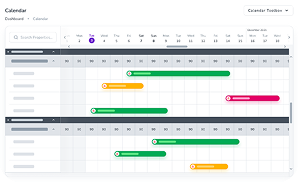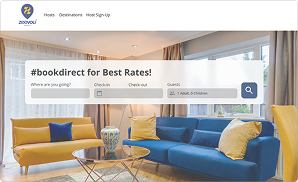Host-guest communication is an essential part of running your vacation rental business. Although automated messages are effective tools to speed up the guest communication process, you need to know what areas can benefit the most from automated messages and when these messages should be sent. In other words, you need to figure out the right automated message workflow for each type of guest.
Importance of Automated Messages
Although communicating with potential and existing guests is crucial for your vacation rental business, it’s time-consuming. To address this challenge, automated messages are a great solution. This tool provides many benefits for you; it helps:
- remove repetitive tasks;
- eliminate human errors;
- save your time and streamline your workload;
- create customised messages based on different types of guests;
- enhance guest experience, and receive more glowing reviews.
What Factors Affect the Automated Messages Workflow?
The key factor in sending automated messages correctly is determining which workflow is suitable for each type of guest. To reach this goal, you need to consider the following questions:
- How far ahead the guests make their reservations;
- Duration of their stay at your rental;
Bookings placed more than four days in advance and longer stays will lead to more communications with your guests. The two questions above specify how many messages you can send before or during guests’ stays.
Types of Automated Messages and Suggested Time for Sending Them
Basic communication is the standard messages you send out for every booking, including booking confirmation, check-in and check-out instructions, mid-stay check-ups, review requests, etc.
In each message you compose and send, make sure to mention what other message(s) will be sent in the next step. For instance, in the booking confirmation, you can say that the check-in instructions will be sent a day before arrival. Not only will this improve your guests’ experience, but it will also cut down on repetitive questions and free up your time.
Booking Confirmation
Once your guests make their reservations, you need to send a message to confirm their bookings. In this message, you can introduce yourself, show appreciation for their choosing your short-term rental, offer early check-in, baggage storage, or airport pick-up and let them know they are welcome to ask their queries.
For all types of bookings (same-day bookings, bookings made 2-3 days in advance or more than four days in advance), you can send the booking confirmation message immediately after booking.
In the booking confirmation (for all types of bookings) message/email, you need to mention that check-in instructions will only be sent after the guest’s meeting your requirements (payment confirmation, rental agreement signature, etc.). You can send some reminders to guests to complete the outstanding steps.
The first reminder for all types of bookings can be sent 5 to 18 hours after booking confirmation. If your guests don’t meet the requirements, you can send another reminder for those who placed reservations 2-3 days in advance an hour before releasing check-in instructions. For guests who made bookings more than four days in advance, you could send the second and third reminder 24 to 48 and 48 to 72 hours after confirmation, respectively.
Check-In Instructions
Before check-in, your guest requires essential information, including:
- check-in time;
- address of your rental,
- access code;
- parking instructions;
- Wi-Fi name and password;
- and your contact information.
For same-day bookings, you can send check-in instructions within the booking confirmation message.
Once a booking is made 2-3 days in advance, and they aim to stay more than two nights, you can share the check-in instructions and access code on the day of check-in.
If a booking is placed more than four days in advance for more than two nights, you can share the check-in instructions three days before check-in (provided that they have met the requirements). It is suggested to send the access code on the day of check-in.
Check-Up
You must address any problems that your guests may face during their stay. Sending mid-stay messages and asking “How’s everything?” helps you to figure out their concerns and avoid getting negative reviews.
You can send this message depending on the length of their stay at your property. For instance, you can send this message a day after check-in for bookings with more than two nights. In addition, you can offer extra cleaning or other upsells for those who stay longer than one week in this type of message.
Check-Out Instructions
Check-out instructions enable tenants to know their check-out tasks before leaving the property.
The message can include check-out time, or remind them to turn off lights, close windows, dispose of their food, etc.
You can send check-out instructions for all types of booking a day before check-out.
Review Reminder
Receiving more glowing reviews will lead to more bookings. So, if your tenants haven’t left a review after checking-out, you can send them a review reminder a few hours after check-out for all types of bookings.
Concluding Remarks
Automated messages are a great feature for communicating with your guests. They speed up the communication process and save you time. However, you need to know what messages are suitable for each type of guest and when you can share the messages with them. The tips suggested here will help you to build an automated messaging workflow for each guest type.





